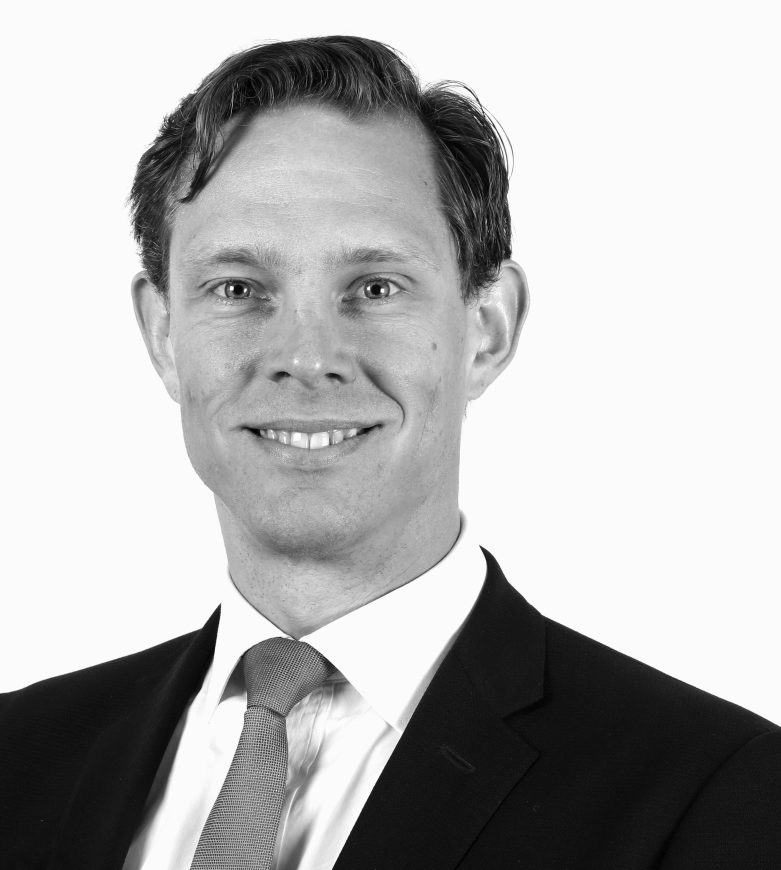Islamic Global Equity Fund
Here, Ashley Lester of British global investment management company, Schroders plc, explains why Islamic global equity fund outperformed Dow Jones Islamic Market World Index in recent years. Interview courtesy of Crescent Leaders and was published in In Focus issue 12.
In 2021, less than a year since its launch, Schroders plc’s Islamic Global Equity Fund was already outperforming the Dow Jones Islamic Market World Index. ‘The index is one of the most prominent shariah-compliant global equity benchmarks,’ explains Ashley Lester, head of systematic investments at Schroders and lead manager of the Islamic global equity fund.
Founded in 1804 and managing assets worth GBP700.4 billion, Schroders is offering its clients access to a global investment universe comprising more than 2,600 stocks that adhere to shariah law. In addition to using a shariah-compliant benchmark, the British multinational asset management company retained Malaysia-headquartered Amanie Advisors to advise on the shariah compliance of the fund.
Ashley tells more about Schroders’ investment strategy for this fund, what makes it different from other Islamic equity funds and how it benefits from ESG-related features.

Reception of the Fund from Investors
We launched this fund along with our distribution partner because we felt that the Muslim population is growing rapidly. It’s growing wealthier. Yet, the investment options available for Muslim investors remain limited. We see it as an opportunity to serve an important part of the community that is underserved, both in the United Kingdom and abroad.
Schroders has been very active in parts of the world where shariah investing is important, including parts of Southeast Asia. Our observation was that shariah-compliant Islamic investors were seriously underserved in terms of the range of product offerings and investment options available for them. We were fortunate to have a distribution partner who made the same observations.
There’s been quite a lot of appetite from investors. As of the end of June 2021, the assets under management of the fund are nearly GBP150 million. We’ve had inflows into the fund well into the tens of millions of pounds. The fund is doing well in terms of assets under management and performance. It outperformed its benchmark [year of 2021] by 2.8 per cent and since inception, it outperformed it by 3.1 per cent as of June 2021.
Difference Between Islamic Equity Fund and Other Shariah-compliant Funds
There are quite a lot of passive funds, but many investors wish to seek options that can do better than the market and obviously we seek to provide them in active space. Many of the funds out there are also quite small in terms of assets under management and they can often focus on quite a specific style of investment, either value or growth, in sort of a single style box.
What is unusual about our fund is our scale – we’re bringing the full investment resources of Schroders in general and Schroders’ Systematic Investments (SSI) in particular, to bear on the problems of making this the best fund that it can possibly be. SSI style is multi-factor, which means we seek to invest across a variety of diversified investment styles in an attempt to provide the smoothest ride of excess returns that we possibly, reasonably can. We think this is differentiating – bringing a well-resourced team to bear on this problem and seeking to deliver value-adding excess returns in a well-diversified style.
Investors generally describe their investment process in terms of different styles of investments – styles that you can see in various trade publications that might describe investors as having a growth or value style. Within the world of quantitative investors, which is the world I’m part of, those styles are generally called factors. There are four or five basic factor ideas that drive most of the quantitative funds which investors see in the market. Those factors involve sources of long-run return that are reasonably well understood by the broad quantitative investment community.
Some examples are the value factor, the idea of buying stocks that appear cheap on some measure. There’s the momentum factor, the idea of buying stocks that would have done well recently and there are other less well-known factors, such as the profitability factor, governance factors and low-volatility factor. These are all rules that quantitative investors use to decide which stocks to buy or not to buy.
It’s possible to buy a quantitative investment that specialises in just one of those styles. However, we believe strongly that this is sub-optimal because by combining at the stock level all of the different sources of insight that you can have about the likely drivers of excess returns, one is more likely, over time, to select stocks which will outperform across a wider variety of market environments. A key part of our process is how to bring together the different factors in such a way that gives just the right amount of diversification and exposure across each different factor.
Business Sectors Equity Fund Targets
A characteristic part of sophisticated quantitative investment styles is that we don’t specifically seek to target sectors most of the time. We can have specific measures which say at the moment, we’ll focus more on technology or industrial, but in general, the great majority of the returns we see from our investment process are pure stock selection.
What we try to do is compare similar companies and buy more of the companies which seem better according to our rules. Overall, compared to the benchmark, we seek to have a pretty balanced set of exposures across industries. That’s quite important because shariah-compliant set of industries are different from the global ones. If we were very focused on particular industries across our other portfolios, but those industries were some of the ones which were excluded from or were in very limited form in the shariah-compliant benchmark, then that would be a problem for our process.
Converging ESG Principles with Schroders Islamic Global Equity Fund
Broadly speaking, there are two underlying driving forces behind ESG investment. One is impact-driven investing and it’s important in ESG investing to measure the impact on the world of the stocks in which you’re investing. Shariah investing was there before ESG investing was there. Much of the idea of shariah investing is to align end investors’ principles with their investments. [When comparing] measures of impact, shariah-compliant fund will show as having a better impact on the world than the market cap benchmark.
We measure that through our propriety tool SustainEx. It seeks to put a dollar value on all of the things a company does that [impact the world] but don’t show up on their balance sheet. Shariah-compliant investing excludes many of the worst offenders including stocks like tobacco, gambling and alcohol and polluters because of the large quantities of debt that they have.
Why end investors might be interested in ESG is because it’s a source of risk-adjusted returns and there we see a lot of convergence across funds. If you think that you have a source of long-run returns, then include that in your portfolio whether you’re seeing impact or not. That’s the focus of a tremendous amount of research by my team. It’s clear that the direction for us, and probably for the industry, is to include across all of our funds more cognisance of the ways in which ESG factors can contribute positively to the return profiles of our investment portfolios.
In terms of our Global Islamic Equity Fund, for various product-specific and regulatory reasons, we ended up launching it without the ESG label. Nevertheless, we measure it relative to the overall benchmark and inherent in shariah investment itself is ESG advantages over traditional investments.
Two, in terms of evaluating which stocks to buy within that universe, ESG factors are inherent to the whole process and becoming more so. The easiest example I can give is of factors which relate to governance. There’s probably a longer tradition of funds using governance factors as a source of excess returns than there is of social and environmental factors. We use governance factors that reflect the extent to which management of a firm is aligned in its interest with the firm’s shareholders as an integral part of our investment process in this fund.
The Fund’s Performance So Far and Future Plans
Our process is to look for lasting rules of what types of stocks tend to outperform in the long run and then invest across a set of those rules. One of the reasons to do this multi-factor process is that any given investment style or factor definitely goes through cyclical swings. There are periods when value stocks underperform. Through multi-factor investing, when one factor underperforms, another factor or more might be outperforming. Diversification is how to get the smoothest ride.
Solid statistical and financial evidence shows the factors we invest in generate return in the long run. Our process is about looking for types of stocks that do best in the long run rather than within six months and getting a diversification effect across these stocks.





